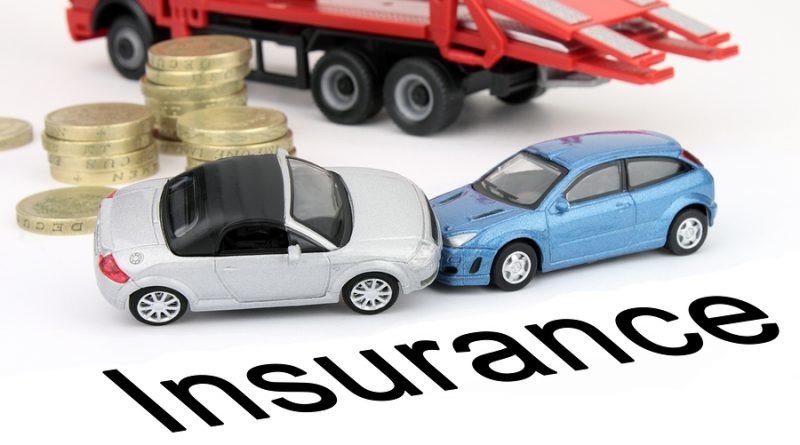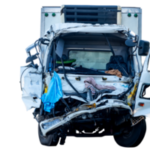A Step-by-Step Guide
If you’ve been involved in an accident, understanding how to file a collision insurance claim is crucial to ensure you get the financial support you need for repairs or replacement. Collision insurance is designed to cover the damage to your vehicle caused by an accident, regardless of who is at fault. Filing a claim might seem daunting, but knowing the process can make it much simpler and stress-free. This step-by-step guide will walk you through the entire process, helping you understand what to do before, during, and after you file your collision insurance claim.
Step 1: Ensure Safety and Seek Medical Help
Before you even think about insurance claims, safety should always be your first priority. After an accident, immediately check for injuries. If anyone is hurt, call emergency services and ensure that medical attention is provided. Once everyone is safe and the scene is secure, make sure to move your vehicle out of traffic if possible. This is important not only for safety reasons but also to avoid any further complications during the claim process.
It’s essential to remember that if you plan to file a collision insurance claim, you’ll need to gather important information and document the scene. So, while safety is your first concern, documenting the accident accurately is your next step.
Step 2: Gather Important Information
To file a collision insurance claim, you’ll need certain information to support your claim. Here’s a checklist of the key details to gather:
- Driver and Vehicle Information: Get the name, contact information, driver’s license number, and insurance details of all parties involved in the accident, including passengers.
- Witness Statements: If there are any witnesses, gather their names and contact information. They can provide valuable testimony in case of any disputes about who was at fault.
- Accident Scene Details: Take photographs of the accident scene, vehicle damage, road conditions, and any other relevant factors (e.g., weather conditions). Be thorough and capture as many angles as possible.
- Police Report: If the police were called, ensure you get a copy of the police report or the incident number for reference.
Having all this information will make it easier for your insurance company to process your claim quickly and efficiently.
Step 3: Notify Your Insurance Company
Once the scene has been documented, and you’ve ensured everyone’s safety, it’s time to notify your insurance company. Most insurance providers allow you to file a claim online, through their mobile app, or over the phone. Regardless of the method, you’ll need to provide detailed information about the accident.
Be honest and thorough in your description. If there were any witnesses, mention that too. Insurance companies appreciate transparency and accuracy, which can help expedite the process.
Step 4: Assessing the Damage and Getting an Estimate
After your claim is submitted, the insurance company will likely send an adjuster to inspect the damage to your vehicle. The adjuster’s job is to assess the extent of the damage, determine the repair costs, and ensure that the damage falls within the scope of your collision coverage.
Depending on the insurance company and the severity of the damage, the adjuster might visit you in person or request that you take your vehicle to a designated repair shop for an evaluation. Some insurance companies also offer virtual assessments via photos or video calls.
Keep in mind that the adjuster’s estimate may differ from the quotes provided by your chosen repair shops, but it’s important to be flexible and understand that the insurance company will use their assessment to determine how much they will pay out.
Step 5: Understand Your Deductible and Coverage Limits
Before the insurance company processes your claim, it’s essential to understand your deductible and coverage limits. Your deductible is the amount you must pay out-of-pocket before your insurance kicks in. For example, if you have a $500 deductible and your repair costs amount to $3,000, your insurance will pay for $2,500, and you’ll be responsible for the $500.
If your car is deemed a total loss (i.e., the cost of repairs exceeds the value of the vehicle), your collision insurance may provide a payout based on your car’s market value, minus your deductible. This is where understanding your policy’s coverage limits becomes crucial.
Step 6: Repairing Your Vehicle
Once the adjuster has assessed the damage and your deductible is confirmed, the next step is getting your car repaired. Your insurance company may have a network of approved repair shops, or you might have the option to choose your own. If you choose a non-approved repair shop, be sure to verify that your repairs will be fully covered under your policy.
Remember, once repairs are complete, your insurance will reimburse you for the approved costs, minus your deductible. If the insurance payout is insufficient to cover the entire repair bill, you may be responsible for the difference.
Step 7: Follow Up and Finalize the Claim
After your vehicle is repaired, you should follow up with your insurance company to ensure that the claim has been fully processed. Keep a close eye on the reimbursement and ensure that it matches the agreed-upon amount. If there are any discrepancies or delays, contact your insurance representative for clarification.
In some cases, if your vehicle is deemed a total loss, your insurance company may issue a check to pay for the market value of your car. This amount may be lower than what you paid for the car, so it’s crucial to understand your policy and any potential gaps in coverage.
Conclusion
Filing a collision insurance claim can seem overwhelming, but by following these steps and staying organized, you can ensure the process goes smoothly. From gathering the right information to working with your insurance adjuster and getting your car repaired, each step is vital in ensuring you’re reimbursed for the damage and can get back on the road with minimal hassle. Always be sure to understand your policy’s terms, keep detailed records, and communicate with your insurer to ensure your collision claim is handled effectively.


